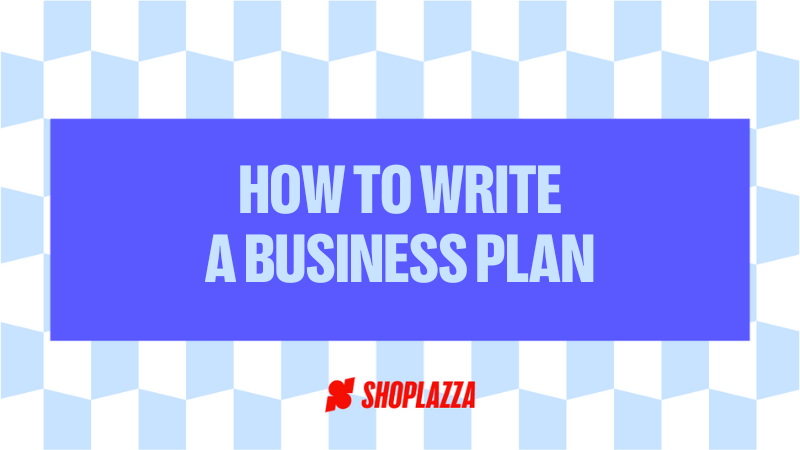
You want to start an online business, but the thing is… you love plants. And it sounds like a crazy idea to sell plants online, doesn’t it? Well, the truth is, it can actually become a profitable business, and we’re here to give you all the deets to start selling plants online .
Selling plants online: what you need to know
Before we dive into how to sell plants online, we want to answer some questions you may have about plant businesses in a quick selling plants online FAQ. Let’s get started!
Can I make money selling plants online?
The idea of selling plants online might seem weird to you – after all, we’re talking about shipping living beings here! However, interest in growing plants spiked at the beginning of the pandemic, when everyone was stuck at home, looking for new hobbies and ways to brighten up their place.
Lockdowns are over almost everywhere, but people are still shopping for plants on the internet, which means you have a good chance of turning your online plant store into a profitable business. Other factors that may influence your profit margins are the kinds of plants you sell and your business model. We’ll delve more deeply into it in this article, so keep on reading to get more answers.
What are the best plants to sell online?
This might surprise you, but there are a lot of plants you can sell online. A few factors can influence your decision, like where you are located and how you pack and ship them. However, succulents are a relatively safe type of plant to sell on the internet. They are low-maintenance, resistant and usually small, which makes it easier for them to survive shipping.

Do I need a license to sell plants online?
Depending on where you’re located, plant businesses might be required to obtain a permit. But the idea isn’t to make it harder for you to start selling plants online! Licenses are a way to prevent the spread of organisms that could harm a place’s agriculture, environment and human population. If you’re based in Canada, check out the Canadian regulations on the Government of Canada’s website.
How to sell plants online in 7 steps
Now that we’ve planted the seed, it’s time to nurture it! We’ve prepared a step-by-step guide to help you sell plants online.

1. Find plants to sell online
Here are some questions to help you choose the best plants for your business:
- Which plant species can you grow or source where you’re located?
- Are the plants available all year round, or will you sell seasonal plants? Do you want to run a seasonal business?
- Do you have enough space and resources at home to grow and care for your plants?
- Do you have time to care for high-maintenance plants, or should you sell more low-maintenance plants?
- How much can you invest in your online plant business? Will you have to buy tools and other resources to maintain your plants?
- What kind of plants do you want to start with or specialize in? Outdoor plants, indoor plants?
- Will you only sell plants, or will you also sell home decor (like decorative plant pots) and plant care products (fertilizer, soil, etc.)?
Grow your own plants

Do you have a lovely garden at home, with a greenhouse and everything? Then why not grow your own plants to sell online?
The main benefit of growing plants at home is that you can choose exactly what you want to sell, giving you more control over what you produce and the freedom to meet your customers’ demands. Besides, you don’t need to deal with plant suppliers when growing your own plants.
The downside, on the other hand, is that you’re limited by the space and resources available to grow plants, which might make it challenging to scale your plant-selling business in the future. Growing your own plants can also be more expensive than working with a nursery or a wholesaler, as they operate on a larger scale and are able to reduce costs.
Source your plants
This is the path taken by most people who sell plants online. By partnering with a plant wholesaler or a local nursery, you can get plants for a much lower price and sell them for profit, all without having to invest in tools and resources to grow plants.
A plant nursery or wholesaler will provide you with a variety of items, from high-quality starter plants and seedlings to rare and delicate plants. While wholesalers are able to sell you plants in large quantities for an affordable price, you’ll have a better chance of meeting customers’ expectations and requests by building a close relationship with local greenhouses or nurseries. Once you begin buying from them more regularly, you might be able to place requests for a specific plant your customers are interested in, for instance.
When choosing your plant suppliers, be thorough in your search to pick the best partners and establish a reliable supply chain for your business.
3. Decide how and where to sell plants online

Create your online store
If you want to run an independent plant business, consider building an online store. By having a nook of the internet to call your own, you have much more control over your business. Besides, having a website makes a company look much more professional and helps you consolidate your brand in the market.
Before you sign up for the first website builder you find, take some time to assess what each one offers so you can choose the right platform for your store.
You might be thinking, I don’t have this kind of money! 😩 The good news is that many ecommerce platforms offer affordable plans for first-time entrepreneurs. For only $28 a month, Shoplazza’s Basic plan equips you with everything you need to sell plants online, and you don’t need any coding or design skills to get started.
Sell on marketplaces
If you don’t want to invest in an online store right now, you can also start by selling plants on marketplaces like Etsy and eBay. These websites come with a hefty customer base that you can tap into, and they offer many resources to help you promote your plant business.
While these websites don’t require an upfront investment, they tend to charge higher commissions than ecommerce builders, which may reduce your profit margins. Besides, you’ll be competing with many other sellers for the same visibility, and making your plants shine amongst so many others may be challenging.
That is why many entrepreneurs choose to open an online store and use marketplaces as additional sales channels. By following this strategy, you get to drive traffic to your store through the marketplaces while building your presence in the plant niche.
4. Create your plant brand

If you want your online plant business to be a huge success, you should spend some time building your brand. Through clear brand identity, you’ll be able to establish a close relationship with your audience and make it easier for them to recommend your store and products.
No idea where to begin? Here are a few things you’ll need to create your plant brand:
- Understand your market. Run a competitive analysis to learn what your competitors are up to and identify gaps in the market. This info will allow you to write a value proposition for your plant-selling business, define a target audience and help your brand stand out.
- Come up with a brand name. A good name usually reflects what the brand is all about, whether it’s your mission, personality, niche or the audience you’re selling plants to. If you’re not feeling inspired, there are several brand name generators available online you can use.
- Create your brand’s visual identity and logo. Your visual identity and logo should be versatile enough to be used everywhere, from business cards to social media posts. You can try and develop your visual identity with the help of free design tools like Canva, or hire a professional designer. Ecommerce platforms like Shoplazza offer several free, customizable themes to help you get started.
- Define a brand voice. What’s the best way to speak to your target audience? Should you sound more formal or casual? Funny, serious or sweet? When applying your brand voice, remember to be consistent throughout all of your brand’s communications.
5. Set up your online plant store
Now that you have a good idea of what your brand looks and sounds like, you need to make the final adjustments to your store so you can start selling plants online:
- Take amazing photos of your plants. High-quality, professionally enhanced product photos help customers visualize the product as if they were in a physical store. Besides, you want people to see how beautiful your plants are, right?
- Apply your own branding everywhere. Make sure that every little detail of your products, every nook of your website and social media presence screams your brand identity. As you’re starting a new plant store, invest some time to write a great About page that your audience can relate to.
- Write compelling product descriptions. Each product page should give all the info customers need before making a purchase: plant species, size, plant care tips, etc. As you write your product descriptions, make sure to infuse each page with your brand voice so you can win over your visitors’ hearts.
- Create easy-to-understand categories. If you’re selling a wide range of plants, you need to make it easy for visitors to navigate through all the options available. You can organize your plants by type (outdoor or indoor plants), size, level of difficulty, and so on.
6. Plan how to pack and ship your plants

One of the worst things that can happen when shopping online is receiving your order and finding out the product is damaged or completely broken. To provide the best shopping experience – and not lose money –, make sure to find the best packaging and shipping services for your delicate plants.
Here are a few things plant sellers need to prepare for when packaging and shipping plants:
- Different climates. If your plant store sells to other regions or countries, you’ll need to take into account the temperature and humidity conditions during the trip and make arrangements to ensure your plants will survive shipping.
- International regulations. Before you start selling online, make sure your new business and its practices are up to code. If you decide to sell plants online to other countries, check out each country’s regulations regarding soil and plant transportation.
- Protecting packages. Placing your plants in boxes isn’t enough; use cardboard strips to keep them stable and prevent the soil from falling out of the container. If you’re selling potted plants, use bubble wrap or other protective material so the pots don’t break during the journey.
- Shipping costs and methods. Find a reliable third-party carrier to certify your plants will arrive safely at their destination. And because they’re living beings that often need natural light and constant care, express deliveries are the best way not to leave your plants in boxes for too long. Opting for a speedy service might increase shipping costs, so look into ways to make your packages lighter, such as shipping plants without any soil or heavy pots.
- Instructions for customers. Not everyone was born with a green thumb. Don’t forget to insert plant care instructions in the package to help customers keep their new babies alive and healthy.
7. Promote your online plant business
Now that you have your own plant-selling business, it’s time to let your audience know about it.
There are several ways you can go about promoting your online business. We’ve put together a list of the most effective marketing strategies:
Invest in SEO
All the time and energy you’ve spent on your own website will go down the drain if no one can find it.
SEO, which stands for search engine optimization, is a strategy many other businesses follow to place their online store in front of potential customers. It consists of using specific keywords throughout the website to tell search engines like Google that your online store is exactly what users are looking for.
🌱 Want to know more about SEO? Check out our Top 9 SEO FAQs: Beginner Edition.
Sell on social media
If you want to sell plants online and reach as many customers as possible, you can use social media both as a marketing tool and a sales channel.
When you feed your audience valuable content that helps potential customers, they become more likely to show gratitude by promoting and buying from your plant store. Besides, investing in a content marketing strategy will enable you to build your authority in the market.
Looking for inspo? Here are some content ideas for your social media:
- Plant care tutorial videos
- Listicles with the best plants for beginners, people who have pets, etc.
- Home decor ideas
- User-generated content, reposting what your customers are saying about your store
- Fun facts about the plants you sell

It might take some time to figure out how to create posts that engage your audience on social media, but the secret to success is good ol’ trial and error. Spend some time analyzing your content’s performance so you can learn from what worked and what didn’t.
And you don’t have to use social media only to offer free relevant content. Because people spend so much of their days on Instagram, TikTok and other platforms, selling on social media is a profitable strategy for any online plant store.
You don’t have to be on all social channels at once. Instead, pick one or two that your audience is more prone to using, create a business account for your brand and apply your own branding everywhere. Oh, and check your inbox and comments frequently to provide the best customer service and buying experience.
🌱A few articles to help cultivate your online plant business:
- How to Use Instagram Hashtags for Likes and Traffic
- What is Facebook Shop and How Can It Help Merchants
Run paid ads
Growing your online store is like growing your own plants: the more you invest, the higher your chances of getting the results you want.
As a new business, you might not want to spend money on paid ads at first, and that’s understandable. While it’s entirely possible to promote and scale a business on a free marketing strategy alone, paid ads have the ability to take your plant business to the next level at a much faster rate.
To get started, consider running campaigns on Google Ads and/or a social media platform of your choice. By the time you begin to sell plants online, you’ll have a clear notion of who your audience is and where they are. This info will help you target your ads and ensure you get the most out of them.
🌱Help your online plant store bloom with these guides:
- How to Run a Google Performance Max Campaign for Your Store
- Best Practices for Optimizing a Landing Page for Google Ads
Make money selling plants online
Many people decided to brighten up their homes with plants during the pandemic, which increased the demand for businesses that sell plants online. If you have a green thumb or are just passionate about plants, then we hope this guide helps you start selling your plants online.




